The BMC Timemachine Road 01 Three is the cheapest version of the Swiss brand’s aero road bike.
Originally released in mid-2018, the Timemachine Road 01 is said to be BMC’s fastest road frameset, complete with cleverly integrated parts and a focus on speed and stability.
Almost four years on, the Timemachine Road 01 Three brings the platform up to date with SRAM’s value-packed wireless electronic groupset, Rival eTap AXS.
Yet while the evidence suggests it does cut through the air with relative ease, sluggish handling and a firm ride make it a stodgy bike to ride on the rough, twisty backroads of south west England.
This, combined with its relatively high weight and price (£6,200 / €6,499 / $6,799), makes the BMC Timemachine Road 01 Three a tough sell unless you live somewhere with forgiving terrain.
Despite its age, the Timemachine Road 01 still looks ahead of its time though.
With its sharp lines, narrow frontal profile and deep, truncated aerofoil tube shapes, it seems every bit the modern aero bike.
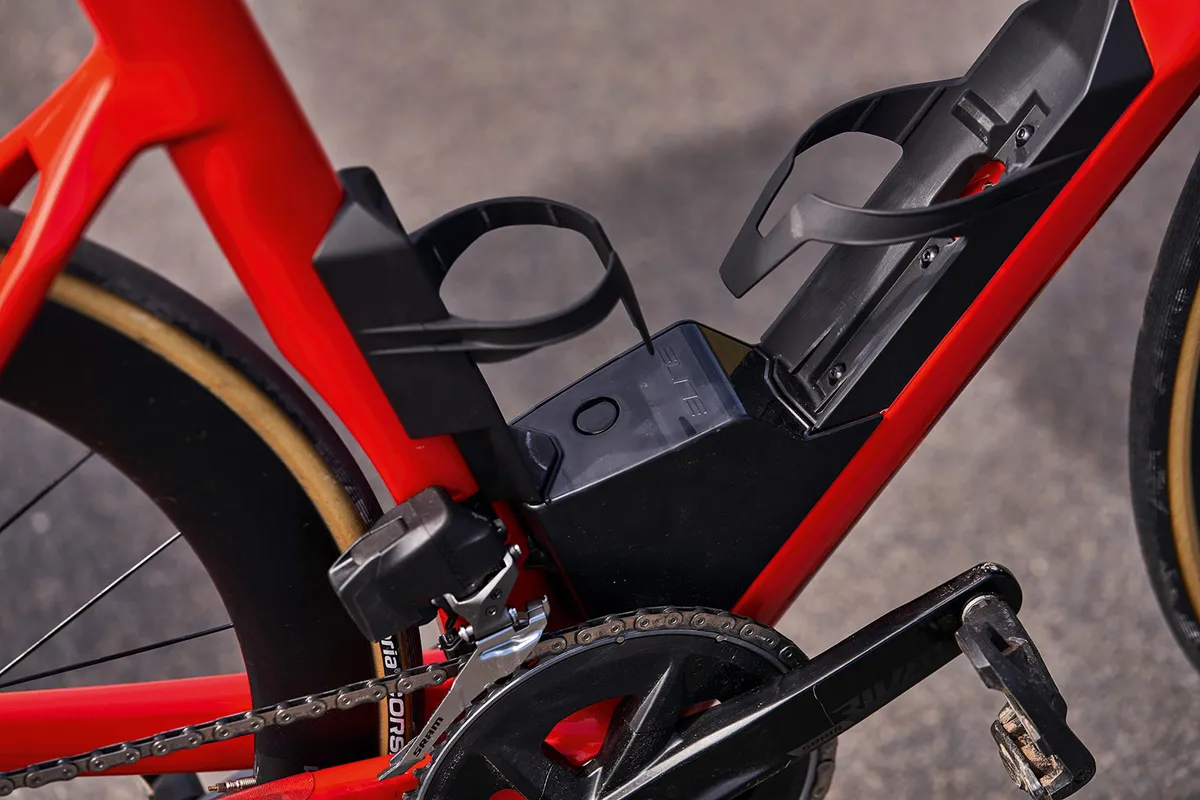
The integration of aerodynamic bottle cages (which will fit standard, round water bottles) cleverly solves the perennial real-world problem of how to carry fluids on a road bike, without spoiling the aerodynamics of the frameset or compromising practicality.
It’s such an elegant solution to the problem, in fact, that it’s somewhat puzzling that other manufacturers haven’t copied it in some form.
The aero storage box – which is nestled above the bottom bracket, between the two bottle cages – is also a neat touch.
Like the storage box on the Orbea Orca Aero, it isn’t UCI-legal (so you’ll need to remove it if you take part in any events sanctioned by cycling’s official governing body), but it’s a very convenient place to store your spares.
I was able to fit an inner tube, a multi-tool, two tyre levers and some puncture repair patches in with no trouble.
That the bike is more aerodynamic with the box in place is a nice bonus, considering most riders will carry items such as those on their rides.
BMC Timemachine Road 01 Three geometry and ride feel
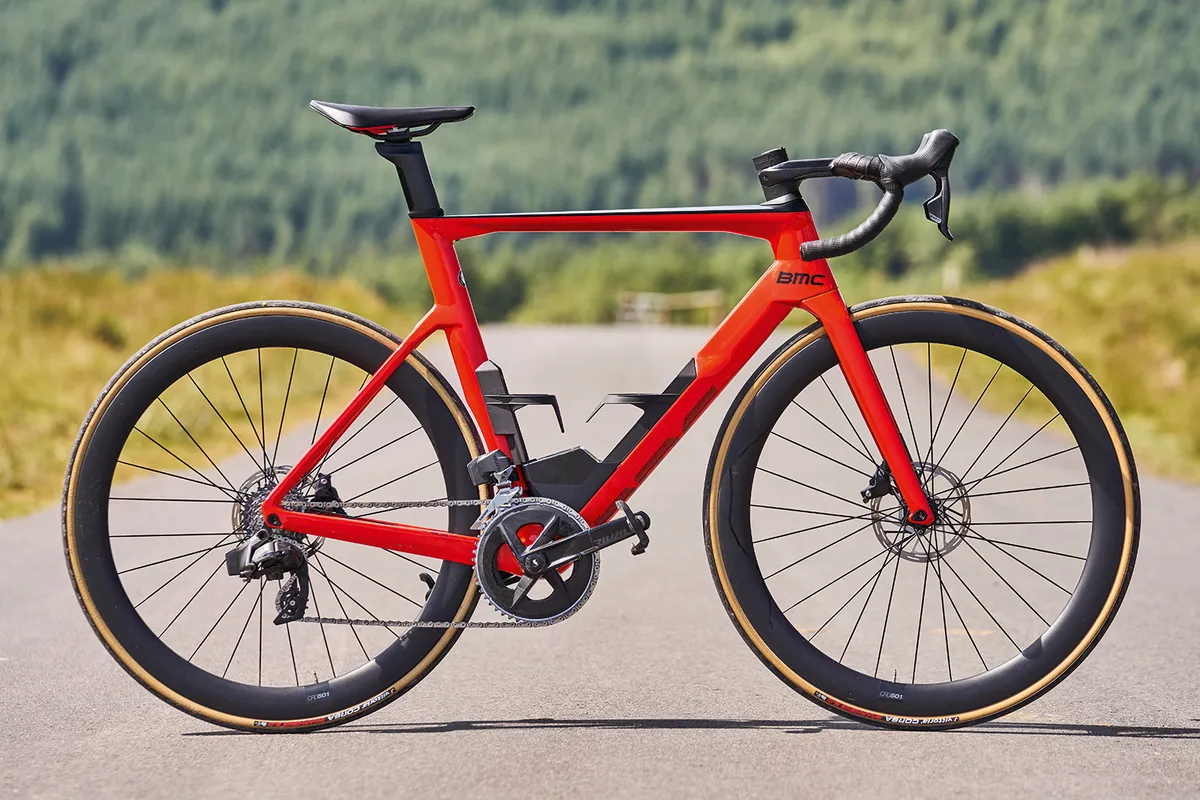
Somewhat surprisingly, getting on the bike leads to a curious disconnect between how things feel and what your bike computer says is happening.
The riding position is typically aggressive for a road racing bike, with a relatively long 395mm of reach and 555mm of stack.
You can run a few spacers under the stem, of course, but like other race bikes, the BMC cajoles you into adopting a more head-down, backside-up position on the bike.
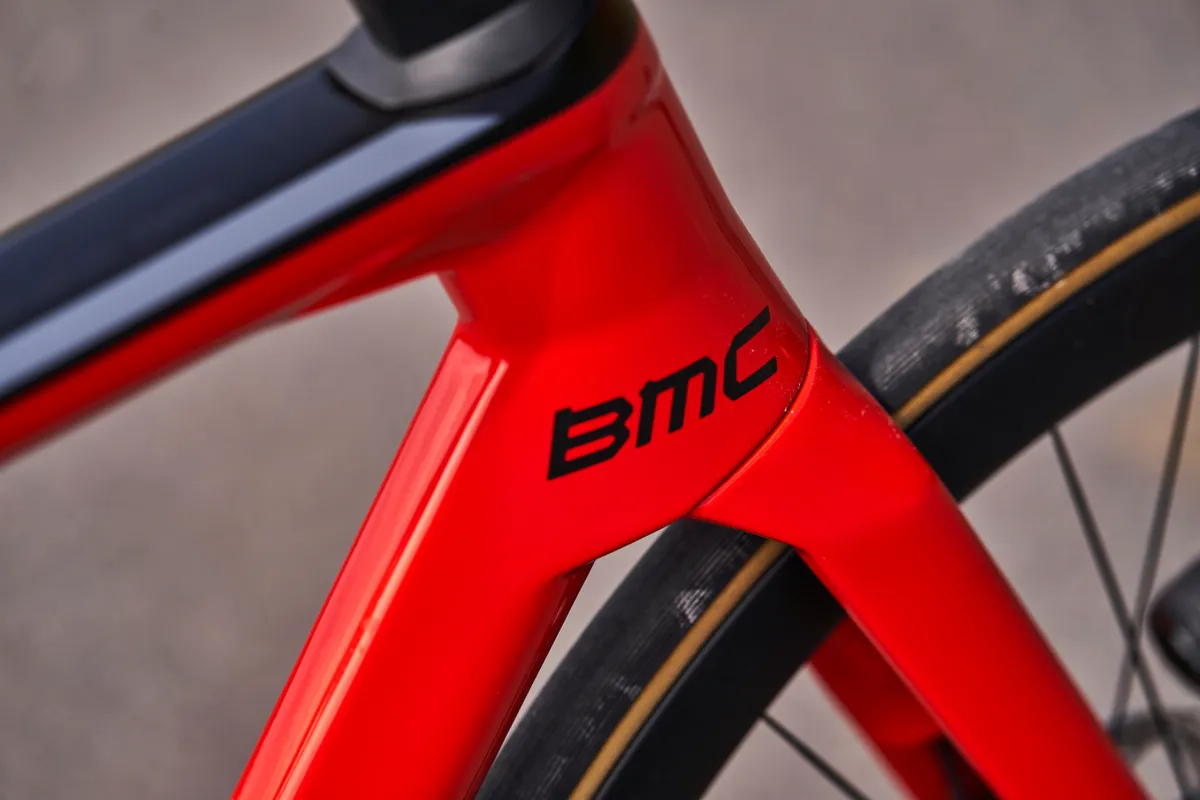
The seat tube angle is also relatively steep, at 73.5 degrees, and the seatpost offers three setback options (30mm, 15mm and 0mm). This gives a huge range of adjustment to optimise your saddle position, especially if you like to get forward over the bottom bracket for a higher saddle position, improved pelvic tilt and a more open hip angle.
So far so good.
Things are more atypical at the front end of the bike, however. The head tube angle sits at a relatively slack 72 degrees, which translates into a trail figure of 62mm.
That’s 4 to 5mm more than you get on a typical aero road bike such as the Cannondale SystemSix, Giant Propel or Trek Madone SLR, and the result is a bike that feels unusually lethargic, especially at slower speeds.
| | 47 | 51 | 54 | 56 | 58 | 61 |
|---|---|---|---|---|---|---|
| Seat angle (degrees) | 73.5 | 73.5 | 73.5 | 73.5 | 73.5 | 73.5 |
| Head angle (degrees) | 71.2 | 71.2 | 72 | 72 | 72 | 72 |
| Rear center (mm) | 410 | 410 | 410 | 410 | 410 | 410 |
| Seat tube (mm) | 480 | 518 | 548 | 568 | 588 | 611 |
| Top tube (mm) | 520 | 535 | 550 | 560 | 575 | 590 |
| Head tube (mm) | 88 | 113 | 135 | 150 | 170 | 196 |
| Fork offset (mm) | 50 | 50 | 45 | 45 | 45 | 45 |
| Trail (mm) | 62 | 62 | 62 | 62 | 62 | 62 |
| Bottom bracket drop (mm) | 70 | 70 | 70 | 70 | 70 | 70 |
| Wheelbase (mm) | 975 | 991 | 994 | 1,004 | 1,020 | 1,036 |
| Standover (mm) | 743 | 774 | 799 | 816 | 834 | 858 |
| Stack (mm) | 496 | 520 | 540 | 555 | 574 | 598 |
| Reach (mm) | 373 | 381 | 390 | 395 | 405 | 413 |
That sensation isn’t helped by the BMC’s portly 8.675kg total weight, either.
As a pure aero road bike, weight isn’t the primary consideration – this is a bike designed to be fastest on flat and rolling courses, not to win hill climbs.
A glance at your bike computer typically proves you aren’t actually riding slowly, either – more often the opposite, in fact, especially in favourable conditions where it can come into its own and pick up significant speed.
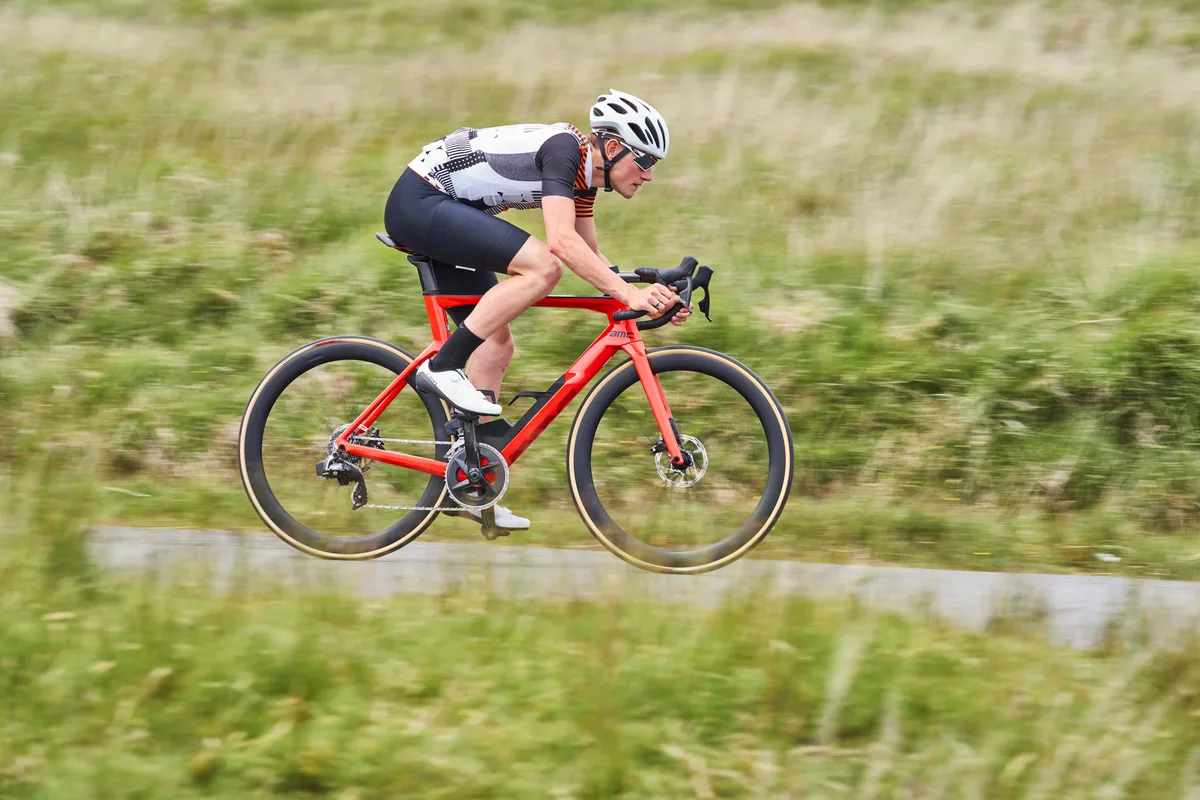
Critically, though, this is a bike that feels heavy and sluggish, and that affects how fun it is to ride.
The upside of this geometry is that the BMC is very stable at high speeds and is well behaved in windy conditions. But it’s also fair to say that faster-handling road bikes, such as those mentioned above, aren’t noticeably unstable either.
On top of this, it's a firm ride, more reminiscent of the previous generation of aero road bikes than those now used to win cobbled classics such as Paris-Roubaix.
As you’d expect from the large, angular tubes, power transfer is excellent, but a few hours on rough back roads left me feeling sorer than the effort warranted.
Overall, it’s a ride quality that simply isn’t at home on the terrain around south Bristol, where the sharp climbs and irregular, twisty roads demand quick reaction times and an ability to pick a line through a myriad of potholes and debris.
Perhaps it would be more so on winding Swiss alpine roads, but even then I’d still prefer a bike that felt more lively and responsive, because it would be simply more exciting.
BMC Timemachine Road 01 Three finishing kit
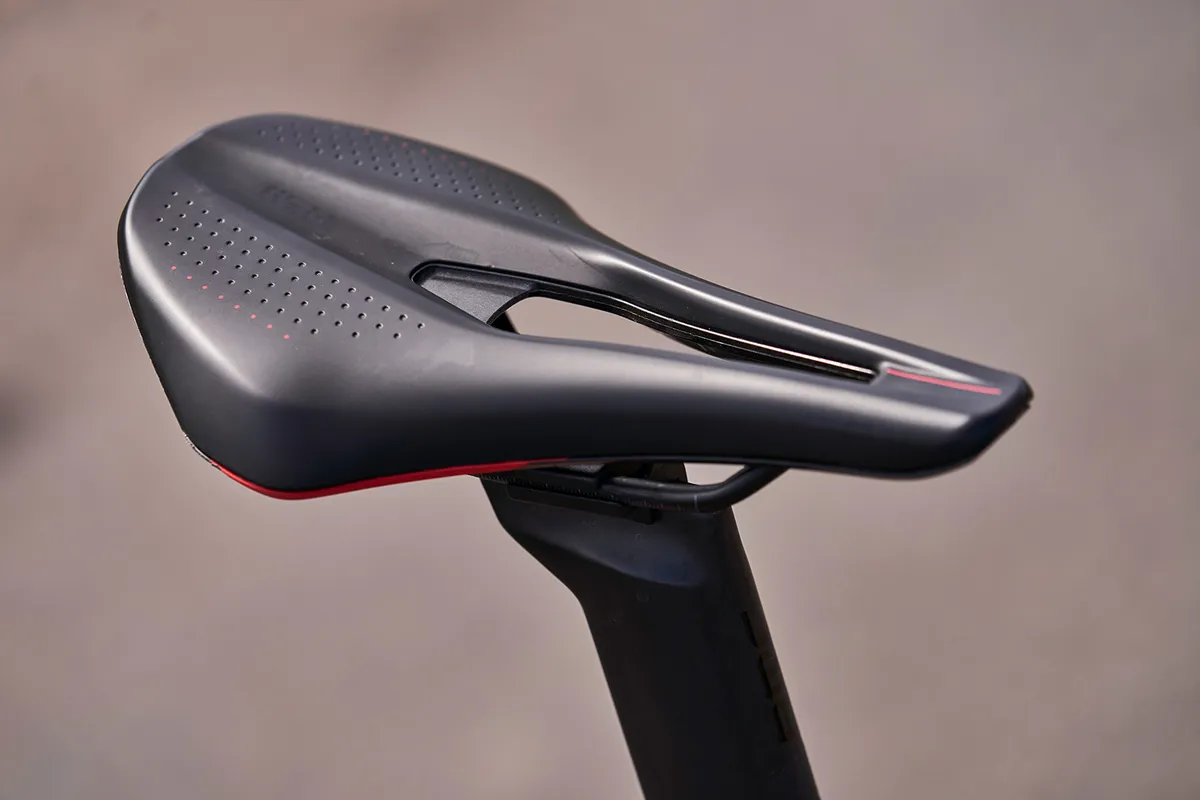
Apart from the saddle, the finishing kit is mostly from BMC, and is generally proprietary to the Timemachine Road 01.
The saddle is a Fizik Argo Vento R5 (140mm width), which is a short-nosed saddle with a generous cut-out that is well designed for the more aggressive torso angles you’ll likely be adopting on this bike.
As already mentioned, the carbon aero seatpost has three setback options (30mm, 15mm and 0mm), allowing you to easily fine tune your saddle position.
Its deep profile doesn’t offer much flex though, especially as the horizontal top tube design means you likely won’t have loads of it exposed.
Unusually, though, the seatpost uses a 14mm bolt through the top of the saddle clamp to attach the saddle and saddle clamp to your chosen setback.
If your saddle has a cut-out (which the Fizik saddle specced as stock does), then the bolt can be accessed through it using a socket wrench, otherwise you’ll need a thin spanner to access it from underneath the saddle.
You’ll need to add one of these to your everyday carry kit too, because a typical bike multi-tool won’t include what you need to work on this part.
If you don’t, this can present a problem if you need to make adjustments mid-ride and you don’t have a 14mm wrench with you (as I unfortunately found out during testing, when the bolt rattled loose over some rough ground).
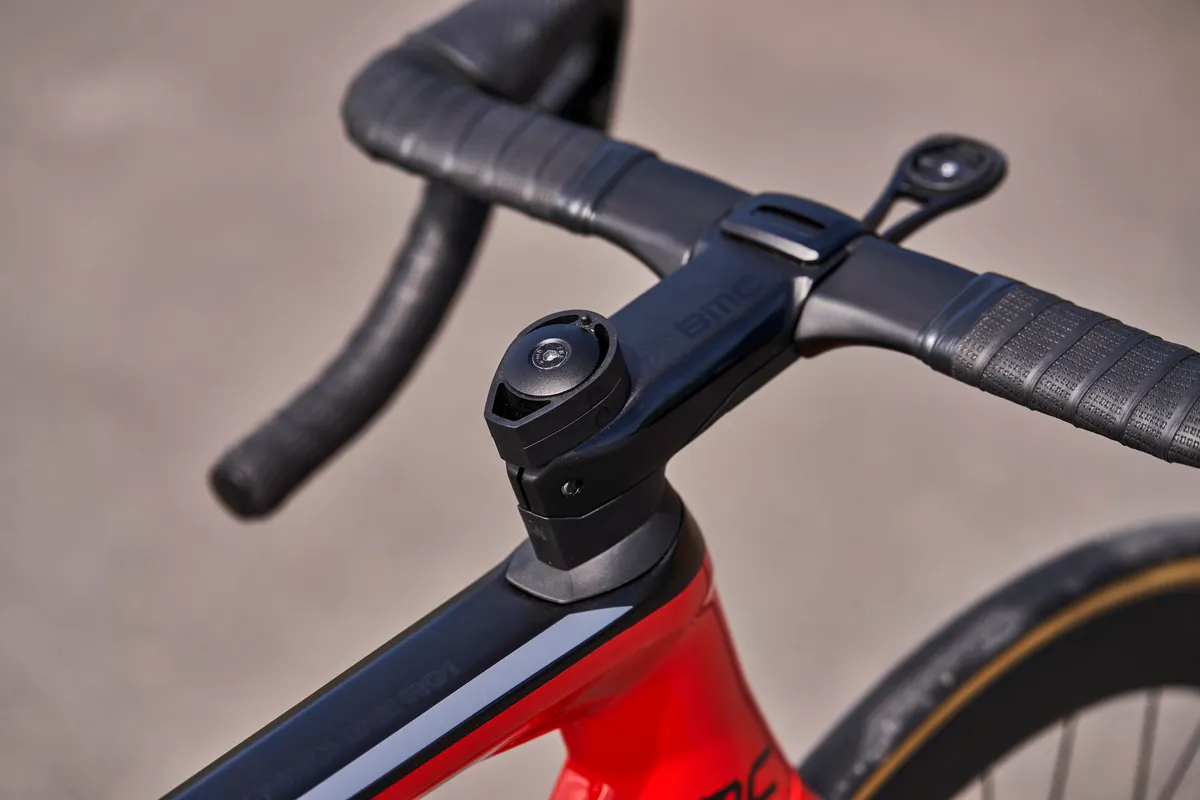
Up front, the cockpit is non-integrated, but doesn’t quite offer the same adjustability as a more standard front end.
The alloy BMC ICS Aero stem is available in lengths of 90mm to 130mm, in 10mm increments, and the matching ICS Aero handlebar in widths of 400mm, 420mm and 440mm.
Both are high-quality parts, but I have a couple of issues with the stem clamp in particular.
The two bolts on the underside of the handlebar, which tighten the faceplate, aren’t angled sympathetically for a torque wrench. Mine fitted okay, but a previous tester reported only one of his four did.
Secondly, the clamping area is a non-standard size (25mm, as opposed to the more typical 31.8mm), meaning it's only compatible with the ICS Aero bar and its limited size range.
That likely won’t be a deal breaker for most riders, but if you prefer a different-shaped bar or something narrower than 400mm, it is possible to swap in BMC’s ICS01 stem (available separately).
It features a 31.8mm handlebar clamp, and would therefore enable you to swap in any standard road bike handlebar you like.
BMC Timemachine Road 01 Three groupset, wheels and tyres
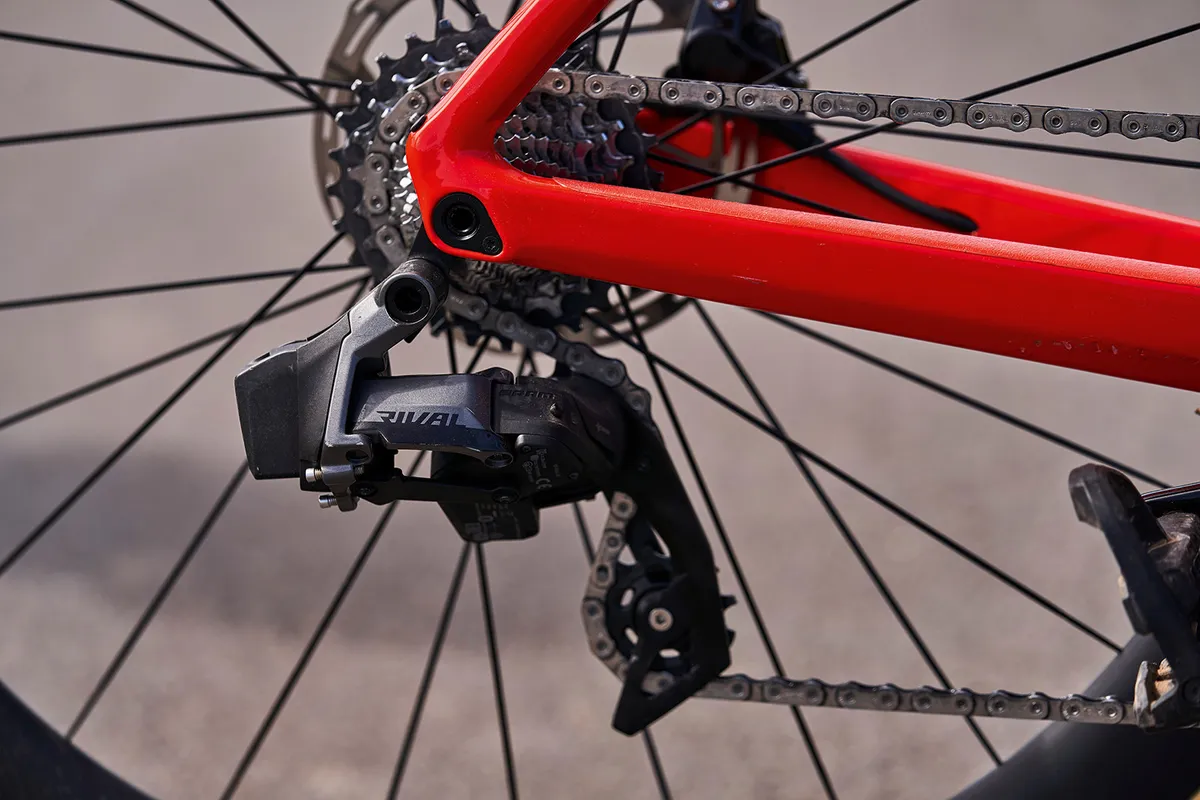
The groupset is SRAM’s cheapest wireless electronic groupset, Rival eTap AXS.
Functionally, it offers almost all of the performance of SRAM’s higher-end groupsets (Force eTap AXS and Red eTap AXS), at a much cheaper price.
Shifter paddle clicks are more vague than its more expensive siblings, and front shifting speed lags noticeably behind that of Shimano’s electronic groupsets, but it otherwise puts in a solid performance across the board.
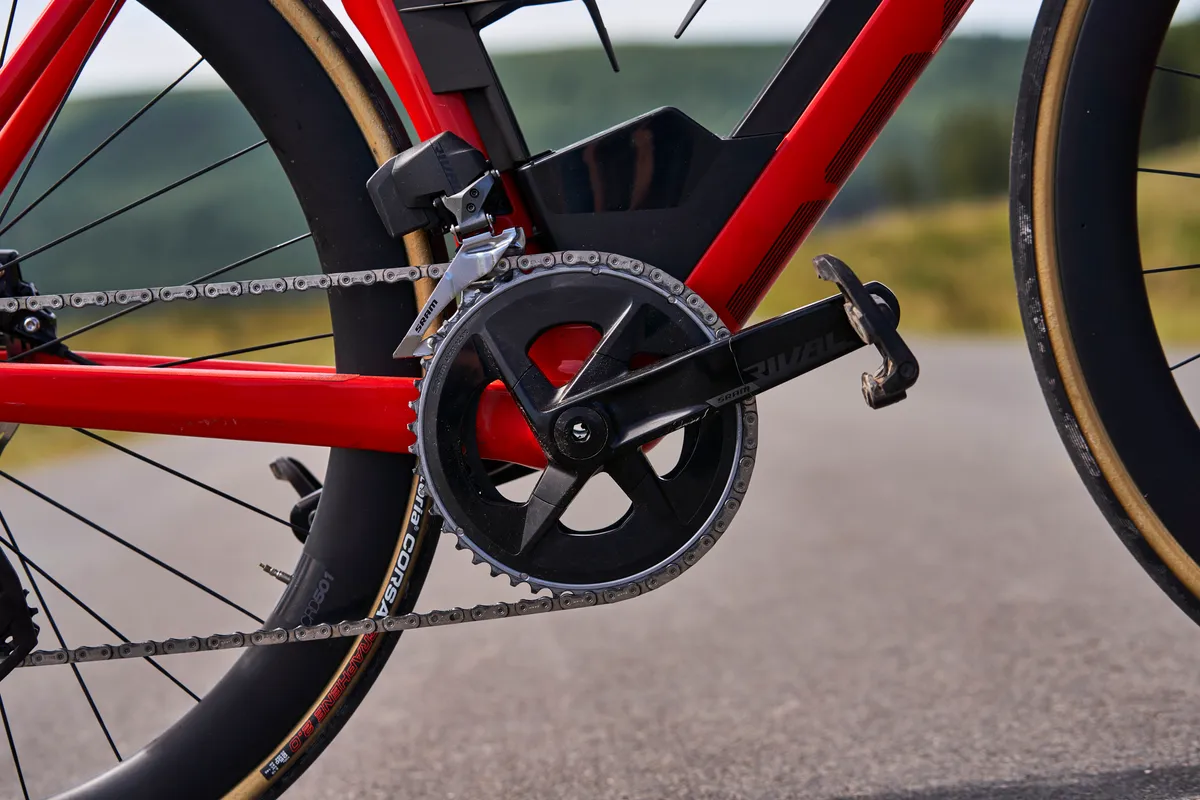
It isn’t light, though, adding approximately 300g over a Shimano 105 R7020 groupset and 450g over an Ultegra R8020 groupset.
The CRD-501 Carbon wheels specced on this build are good, if not amazing – mainly because they have a fairly conversative rim profile.
The 50mm rim depth does add a noticeable aero benefit, but the relatively narrow 17mm internal and 26.7mm external rim width means they’re optimised for use with 700 x 25c tyres as a maximum and, indeed, that’s what is specced here.
25c tyres were considered wide for an aero bike not so long ago, but 700 x 28c tyres are now arguably the standard for road bikes, and it wouldn’t be a surprise to see the trend towards even wider tyres on the road continue in the coming years.
On that subject, the Timemachine Road 01 also has an official maximum tyre clearance of 28mm.
While that’s adequate for the type of fast road riding it's primarily designed for, it does somewhat limit its versatility in comparison to a few of its rivals, such as the Cannondale SystemSix, Canyon Aeroad CFR or Merida Reacto, all of which can accommodate tyres at least 30mm wide.
The Vittoria Corsa G2.0 clincher tyres are a high-end choice, which offer supple casings, relatively low rolling resistance and lots of grip, but tubeless versions would have been appreciated given the wheels are tubeless-ready.
BMC Timemachine Road 01 Three bottom line
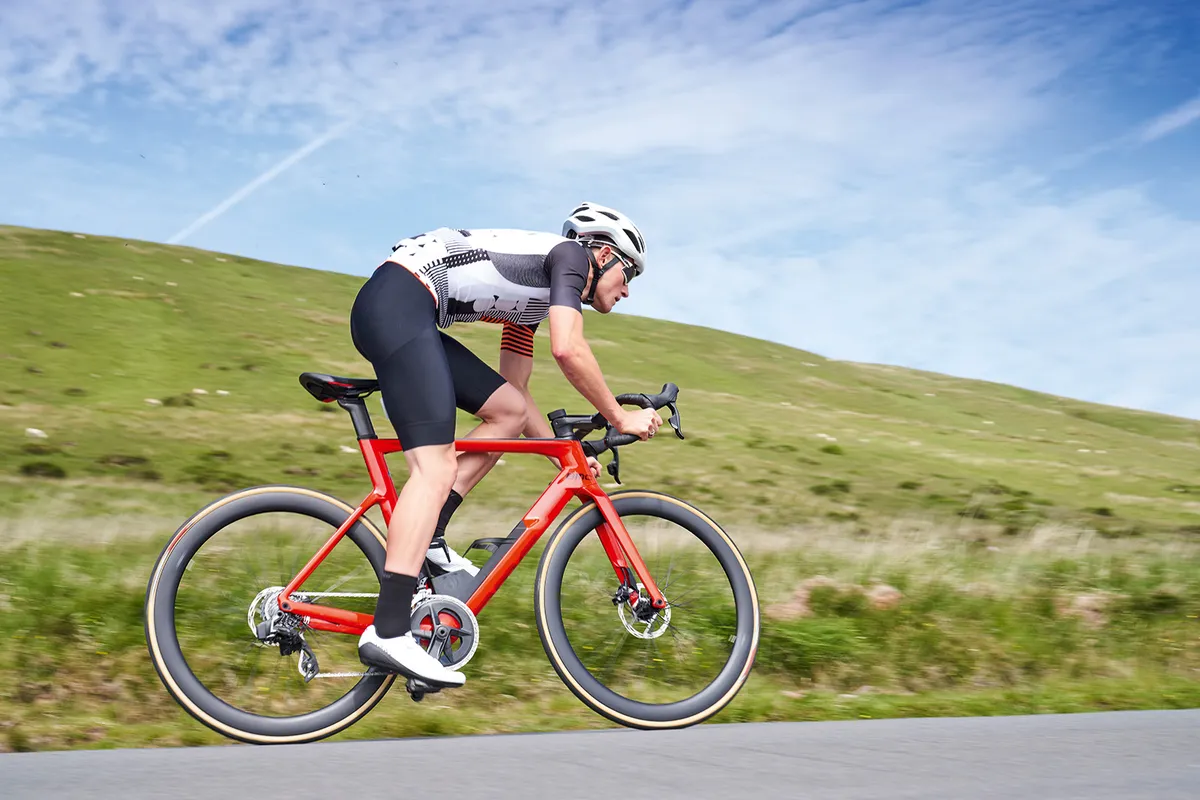
The BMC Timemachine Road 01 Three looks the part, but doesn’t quite deliver on all of its promise.
It’s undoubtedly a fast bike on the right roads, but the unusual geometry can make riding it elsewhere feel like hard work.
It’s also hard to ignore the relatively high price and weight compared to some of the similarly specced competition.
A Canyon Aeroad CF SLX 7 Disc eTap costs £4,749 and is claimed to weigh 8.22kg, for example, while the Merida Reacto 7000 and Giant Propel Advanced Pro Disc 1 cost £4,350 and £4,599 respectively. All three of these bikes also include a power meter.
Trek’s Madone SLR 6 eTap is, at £7,100, significantly more expensive, but does come equipped with a power meter and a more progressive wheelset (Bontrager’s Aeolus Pro 51).
Ultimately, though, the world of aero road bikes has moved on in significant ways over the last few years and while the BMC Timemachine Road 01 Three has some great ideas that have stood the test of time, it also has some catching up to do in other areas.
How we tested
Whether you’ve pinned on a number or are just trying to beat your mates to the café, the breakaway is a staple of almost every race.
To turn the odds in your favour, you need a bike to suit the task. Something aerodynamic and efficient. Nothing too heavy, so you don’t waste energy on the climbs. Comfortable enough for a long day in the saddle, but with lightning-quick reactions for searing attacks at the finish.
In this test, we pitted three leading all-rounder road bikes with an aero bent to see which provides the best mix of all-round performance when you need to turn on the taps.
Our testing involved longer rides on the rolling terrain of the Mendips. We took in lots of climbing and descending, as well as both good and bad roads, to see where each bike excelled and where they reached their limits.
Putting each bike through its paces back-to-back enabled us to tease out the differences in ride quality and handling, while we also considered how easy each bike is to adapt to your preferred bike fit – an important detail too often overlooked in favour of small gains in the wind tunnel.
- BMC Timemachine Road 01 Three
- Cube Litening C:68X SL review
- Factor Ostro VAM review
Product
| Brand | bmc |
| Price | 8499.00 AUD,6499.00 EUR,6200.00 GBP,6799.00 USD |
| Weight | 8.6750, KILOGRAM (56cm) - with storage box, aero bottle cages and out-front mount |
Features
| Fork | Timemachine Road 01 |
| br_stem | BMC ICS Aero |
| br_chain | SRAM Rival, 12-speed |
| br_frame | Timemachine Road 01 |
| Tyres | Vittoria Corsa G2.0, 700 x 25c |
| br_brakes | SRAM Rival eTap AXS HRD, Paceline Rotors (160mm / 160mm) |
| br_cranks | SRAM Rival eTap AXS |
| br_saddle | Fizik Argo Vento R5 (140mm) |
| br_wheels | CRD-501 Carbon, Tubeless Ready, 50mm |
| br_shifter | SRAM Rival eTap AXS HRD |
| br_cassette | SRAM Rival XG-1250, 10-30T |
| br_seatpost | Timemachine Road 01 Premium Carbon Aero |
| br_handlebar | BMC ICS Aero |
| br_bottomBracket | SRAM DUB, BB86 press-fit |
| br_availableSizes | 47, 51, 54, 56, 58, 61cm |
| br_rearDerailleur | SRAM Rival eTap AXS |
| br_frontDerailleur | SRAM Rival eTap AXS |
